How to Measure Customer Loyalty: Top 8 Metrics in 2025
Track key metrics like repurchase rate, upsell ratio and CLV on how to measure customer loyalty. NPS and engagement rates also offer insights into how likely customers are to stay.

Track key metrics like repurchase rate, upsell ratio and CLV on how to measure customer loyalty. NPS and engagement rates also offer insights into how likely customers are to stay.

Customer loyalty is a crucial aspect of any successful business. 57% of consumers spend more on brands or providers to which they are loyal. But how to know if customers are truly loyal to the brand? How to measure the level of loyalty that customers have towards the products or services?
Building a loyal customer base takes time and effort. Creating positive experiences and meeting customer expectations are essential. Simply assuming that the customers are loyal is not enough. Businesses need to have a way to measure and track their loyalty.
We will explore the various methods and techniques that will help businesses understand how to measure customer loyalty. Let’s dive in to kick start your journey to improve customer retention and drive business growth!
Customer loyalty refers to the ongoing commitment people show when they keep choosing the same brand, not just for convenience or price, but because they trust it and feel connected to it. It’s what makes them return, recommend it to others and stick with it even when cheaper or easier options are available.
The loyalty mechanism works through a continuous cycle of positive experiences and reinforcement. When customers receive exceptional value, be it through product quality, service excellence, or meaningful engagement, they develop trust and emotional attachment.
Key principles:
Let us go through the critical reasons why measuring customer loyalty should be at the forefront of your business strategy and how to effectively do it.
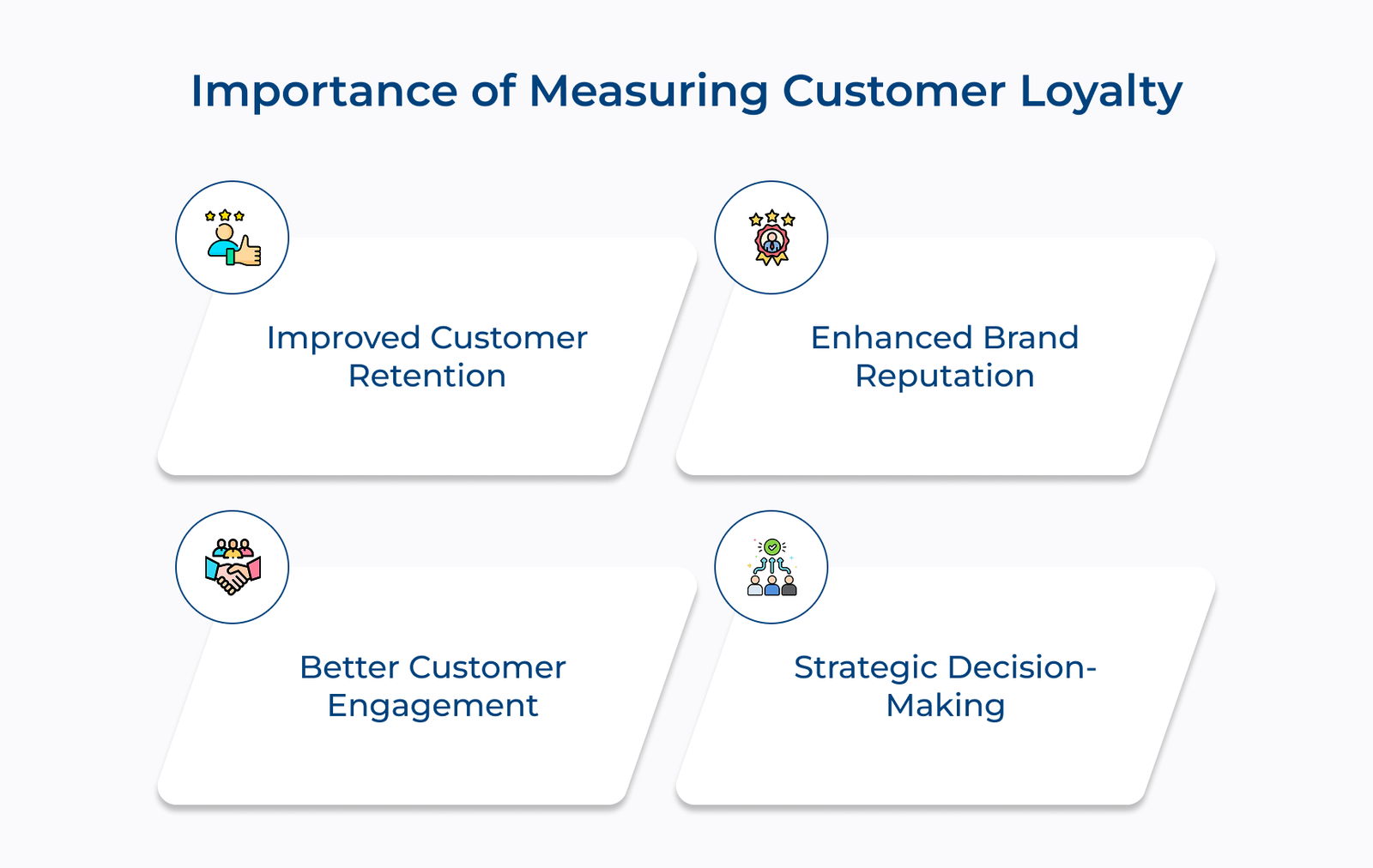
Businesses can identify areas where they can improve customer satisfaction and retention by measuring customer loyalty over time. Tracking repeat purchases, customer feedback and Net Promoter Score can guide strategies for customer retention.
47% of consumers demonstrate their loyalty by recommending brands to friends and family. Measuring customer loyalty can help track their brand reputation. It ensures that they deliver a consistent and positive customer experience.
Measuring customer loyalty can help businesses understand their customers better. It also helps to tailor their offerings and marketing efforts to meet their needs. Tracking satisfaction, surveys and social media can boost engagement. It can also enhance stronger relationships with their customers.
Businesses can use customer loyalty metrics for data-driven decisions on marketing, offerings and customer service. Measuring customer loyalty can identify trends, opportunities and areas for improvement. It allows them to stay ahead of the competition and keep their customers happy.
Ready to unlock the secrets to lasting customer loyalty? Let’s explore how mastering the Three R’s of customer loyalty can revolutionize your business approach and boost your bottom line.
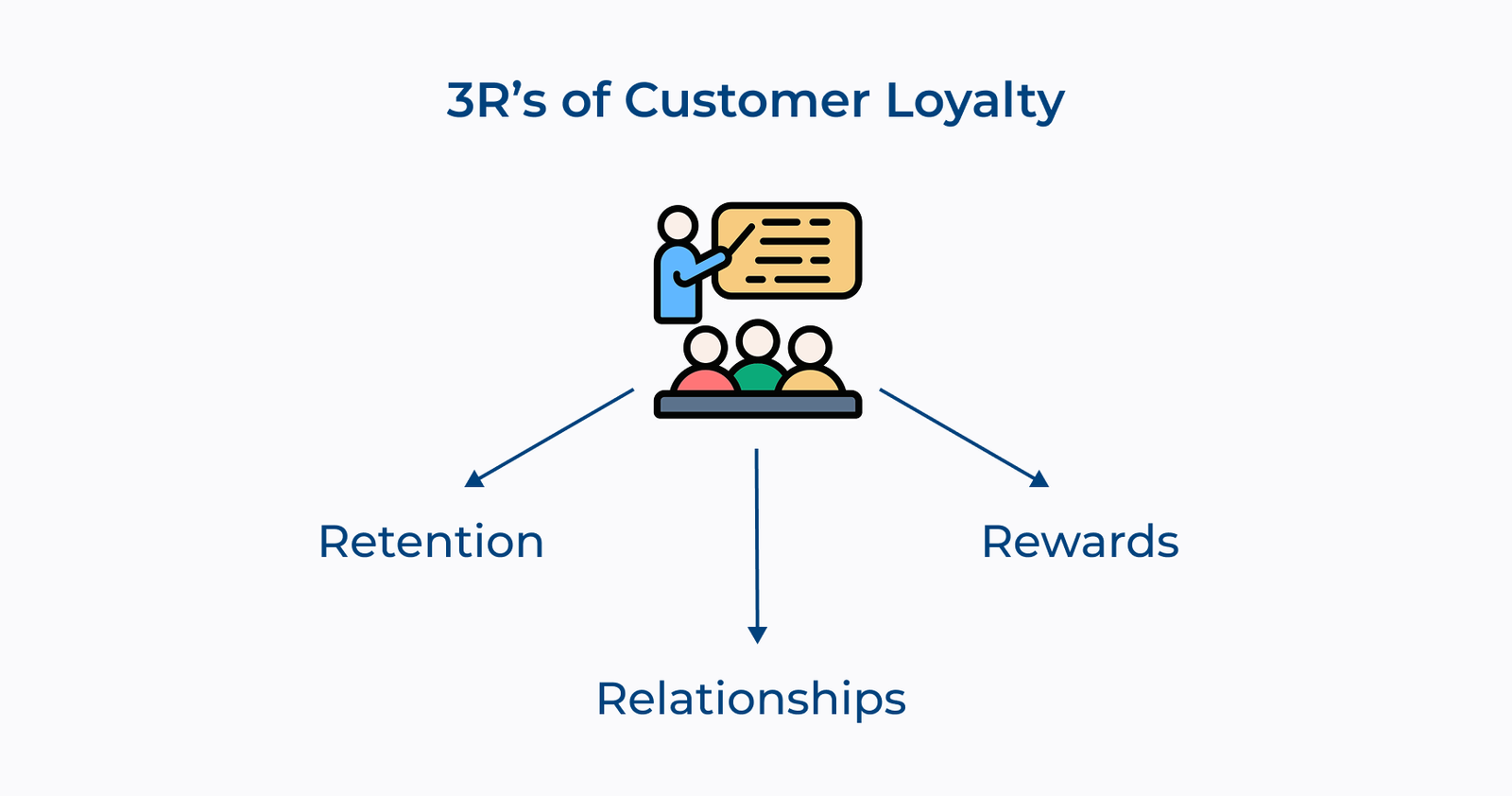
1. Retention
Retaining customers is much more cost-effective than acquiring new ones. Excellent offerings and support can ensure that their customers keep coming back. Retention strategies can include personalized communications and loyalty programs ensuring customer satisfaction.
2. Relationships
Building strong relationships with customers is essential for creating a loyal customer base. Customers who feel valued are more likely to continue doing business with a brand. Building relationships can involve providing excellent customer service. They can also personalize recommendations and engage with customers on social media.
3. Rewards
Offering rewards and incentives to loyal customers can help keep them coming back for more. Reward programs, discounts and offers incentivize customers to stay loyal. Showing appreciation can enhance deeper connections with their customers.
Below are the key metrics that will allow you to effectively assess customer loyalty and transform your business strategies for enduring success.
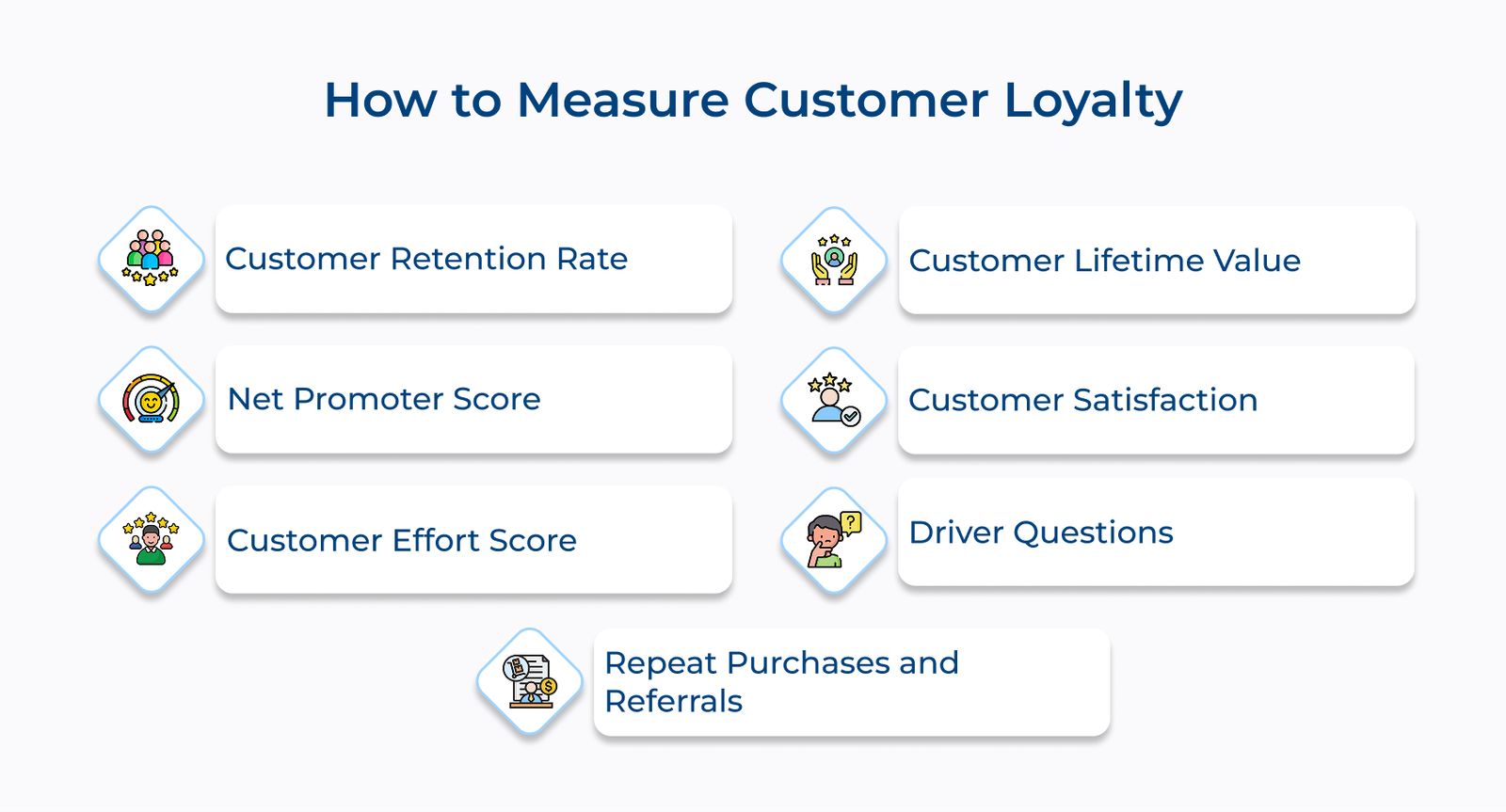
Customer retention rate is a key metric used to measure customer loyalty. It provides insight into how successful businesses are at retaining customers over a period. The metric is crucial for measuring loyalty because repeat customers are often more profitable to a brand. 65% of a business’ revenue is generated by existing customers, highlighting the financial significance of retention.
The formula to calculate the customer retention rate is: (Number of customers at the end of the period – Number of customers acquired during the period) / Number of customers at the start of the period) x 100.
Gather the necessary customer data for the period the company is interested in and use the formula above. Let’s assume that a business starts the month with 100 customers and ends the month with 90 customers. If no new customers were acquired during the month, the customer retention rate would be 90%.
Pro tips:
Customer Lifetime Value (CLV) is a metric used to measure the total revenue a customer will generate throughout their relationship with the company. It measures customer loyalty by considering their long-term value, not just individual purchases.
The formula for calculating CLV is:
(Average Purchase Value) x (Average Purchase Frequency) x (Customer Lifespan).
Let’s consider that the average purchase value is $50, the average purchase frequency is 2 times per month. The estimated customer lifespan is 5 years. The CLV would then be $50 x 2 x 12 x 5 = $600.
Pro tips:
Net Promoter Score (NPS) is a widely used metric to measure customer loyalty. It provides an overview of how likely customers are to recommend a company to others. It is a valuable tool for assessing customer satisfaction and loyalty.
The formula for NPS is simple:
Subtract the percentage of detractors (customers who are unhappy or unlikely to recommend) from the percentage of promoters (customers who are satisfied or likely to recommend). It results in a score ranging from -100 to 100.
Pro tips:
Customer satisfaction is a crucial metric to measure customer loyalty. It gives businesses an overview of how satisfied their customers are with their offerings. The metric measures customer loyalty by showing how likely customers are to stay with a brand and recommend it to others.
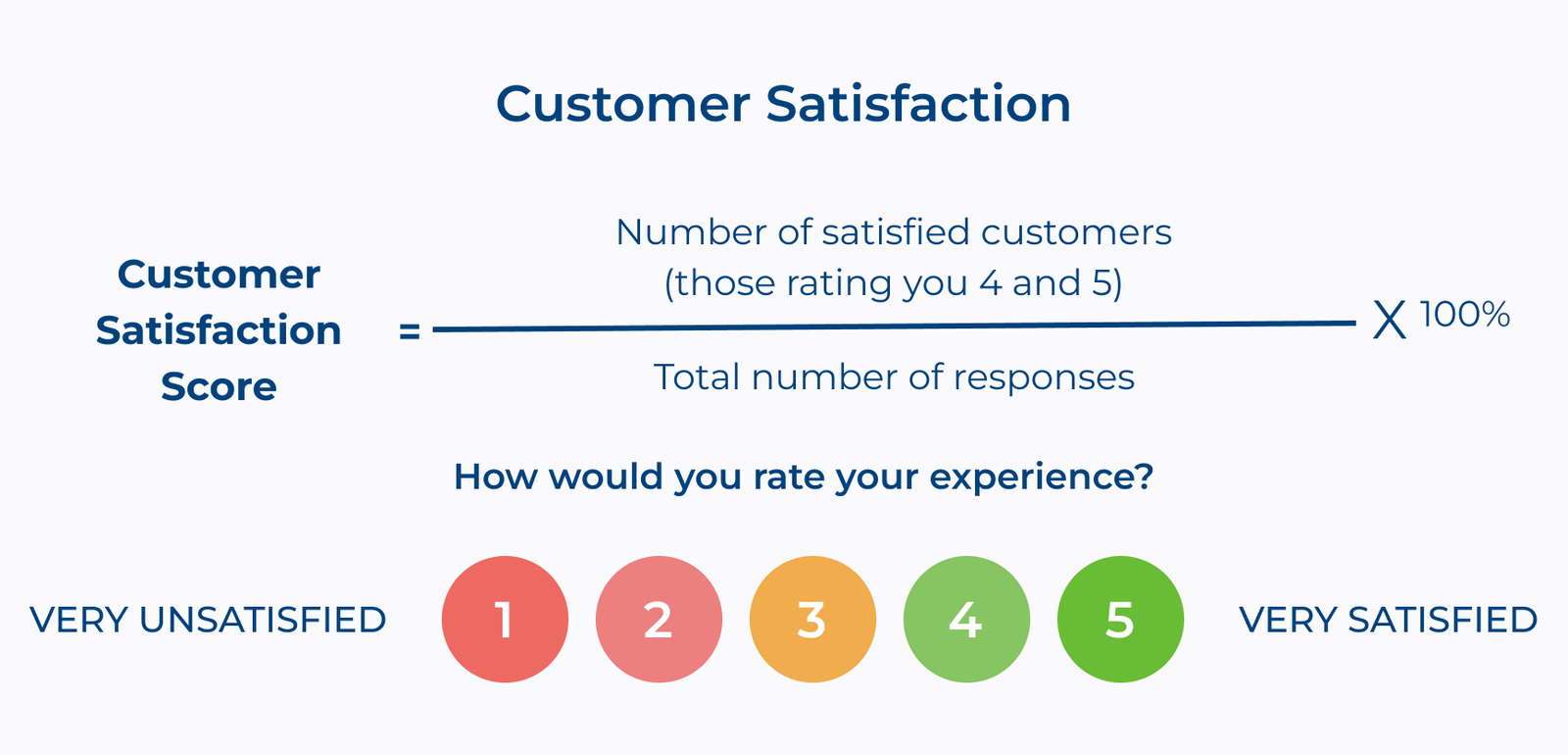
The formula to calculate customer satisfaction as a metric for measuring customer loyalty is:
(Customer Satisfaction Score / Total Responses) x 100
Calculate the metric, gather responses from customers through surveys or feedback forms. Calculate the average satisfaction score and divide it by the total number of responses. Multiply the result by 100 to get the percentage of satisfied customers.
Pro tips:
The Customer Effort Score (CES) is a metric used to measure the ease with which customers can interact with a company. It is considered a key component in measuring customer loyalty as it directly correlates with customer satisfaction and retention.
The formula for calculating CES is simple:
The average response to the question, “How much effort did you personally have to put forth to handle your request?” on a scale of 1-7. 1 being “very low effort” and 7 being “very high effort”.
Calculate the CES by surveying customers post-interaction to rate the effort required for customer loyalty measurement. Calculate the average score from all responses to get the CES.
Pro tips:
Measuring Driver Questions can help gain insights into what aspects of their product or service are most important to customers. The information can help companies focus on areas that will have the biggest impact on customer loyalty. It leads to increased customer retention and satisfaction.
The formula for calculating the metric is:
(Number of positive responses to Driver Questions / Total number of responses) x 100 = Percentage of customer loyalty
Let’s consider that a company may ask customers how likely they are to recommend their product to a friend, with responses ranging from 1 to 10. Calculating the percentage of customers who gave a rating of 9 or 10 can measure customer loyalty.
Pro tips:
Repeat purchases and referrals are key metrics used to measure customer loyalty in a business. Repeat purchases are the number of times a customer purchases from a company. Referrals are when a customer recommends a product or service to others.
The metrics help in measuring customer loyalty by indicating how satisfied customers are with a company’s offerings. A higher number typically means that customers trust the company enough to return and recommend it to others.
The formula for calculating the metric is:
Repeat Purchases + Referrals / Total Customers = Customer Loyalty Score
Calculate the metric for measuring customer loyalty by:
Let’s assume that a company had 100 total customers, 30 repeat purchases and 10 referrals in a month, the customer loyalty score would be:
(30 + 10) / 100 = 0.4 or 40%
Pro tips:
Here’s a rundown of essential best practices to effectively measure customer loyalty and ensure your efforts yield lasting results.
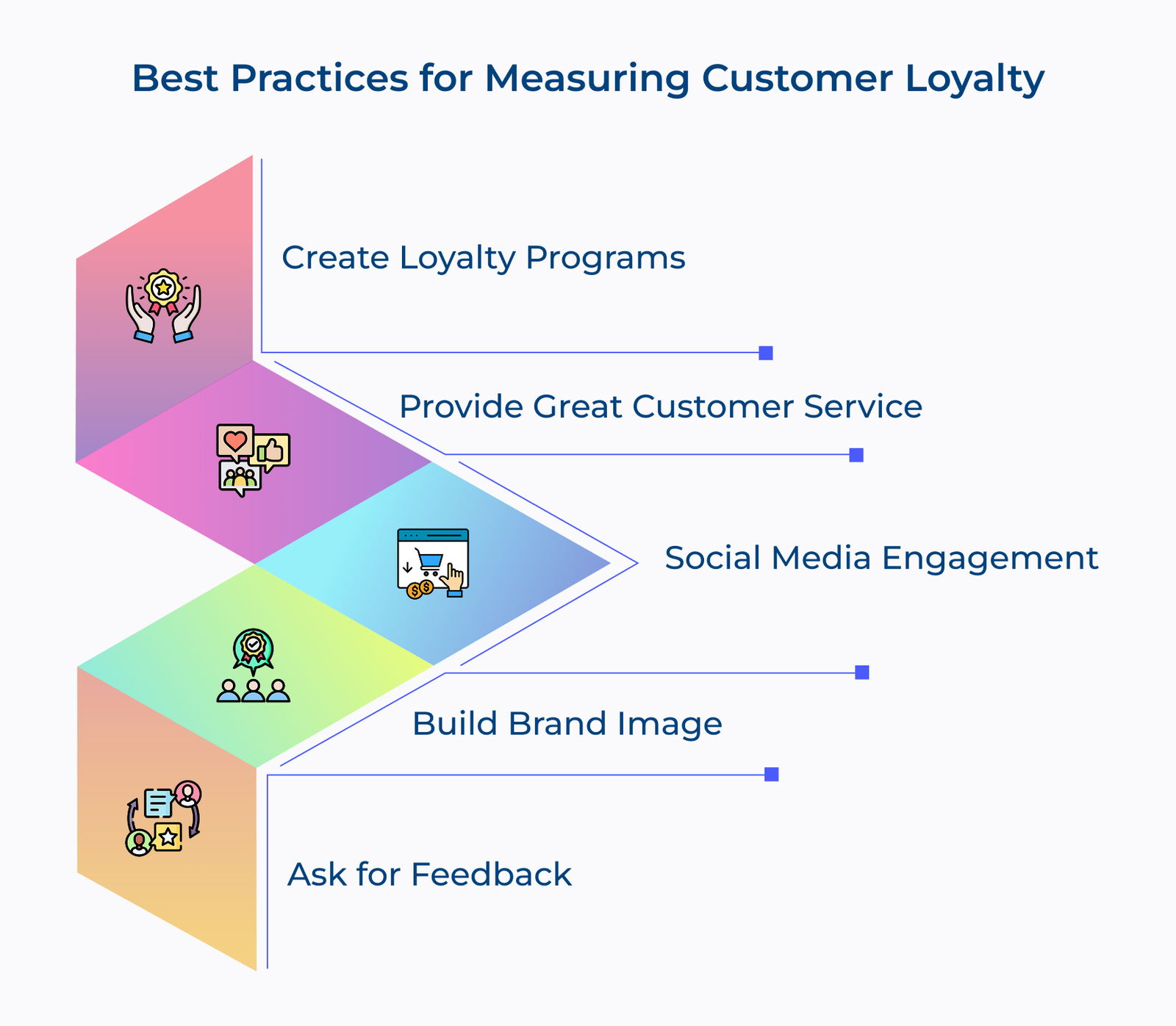
Implementing a loyalty program is a great way to reward the customers for their repeat business. 75% of consumers will favor a brand if there is a loyalty program. Providing discounts, freebies and exclusive perks can motivate loyal customers to choose the brand over competitors.
Excellent customer service is key to building customer loyalty. Make sure the team is well-trained, friendly and responsive to customer inquiries. Going above and beyond to solve any issues can go a long way in earning their loyalty.
Engaging with customers on social media platforms can help build a strong relationship with them. Respond to comments, messages and reviews in a professional manner. Use social media to showcase the brand’s personality. Share valuable content and provide updates on promotions or events.
A positive brand image can significantly impact customer loyalty. Develop a compelling brand identity aligned with the audience and consistently fulfills the brand promise. Building trust and credibility with the customers can increase their loyalty to the business.
Soliciting feedback from the customers shows that the company values their opinions and is committed to improving their experience. Use surveys, campaigns, or feedback forms to gather insights into how the company can better meet their needs. Implementing their suggestions can help enhance customer satisfaction and loyalty.
Measuring customer loyalty works best when you track both numbers and experiences. Metrics like Net Promoter Score (NPS), Customer Lifetime Value (CLV) and repeat purchase rates show the hard data. The surveys and direct conversations reveal the reasons behind customer behavior. Setting a baseline and tracking changes over time helps you address problems before they grow.
Improving loyalty means turning insights into concrete changes. Use feedback to refine products, fix service bottlenecks and make interactions more relevant to each customer. Review progress regularly so your efforts focus on the changes that matter most to keeping customers coming back.
Key takeaways:
Customer satisfaction surveys are a valuable tool for measuring customer loyalty. They provide direct feedback from customers about their experiences with the brand. Regularly conducting surveys and analyzing the responses can help identify improvement areas. It also addresses customer concerns and enhances the customer experience.
Measuring customer loyalty regularly is important, be it monthly, quarterly, or annually. Tracking customer loyalty metrics consistently over time can help identify trends. It can also help spot areas for improvement and make necessary adjustments.
Customer loyalty is measured by repeat purchases, customer retention and positive word-of-mouth referrals. Repeat purchases indicate that customers are satisfied with a product or service and are willing to repurchase. High customer retention rates show that customers are loyal and continue to support a brand over time. Positive word-of-mouth referrals demonstrate that customers are willing to recommend a brand to others.
The 4 Cs of customer loyalty are Consistency, Communication, Customization and Care. Consistency involves providing reliable service. Communication ensures open customer interaction, tailors products or services to meet individual needs. Care shows genuine concern for customer satisfaction. Focusing on the four aspects can build strong relationships and promote repeat business.
Key Performance Indicators (KPIs) for customer loyalty include customer retention rate, Net Promoter Score (NPS) and customer lifetime value. It helps businesses measure the success of their loyalty programs and customer satisfaction efforts. Tracking KPIs can identify trends, improve customer experience and increase customer loyalty.
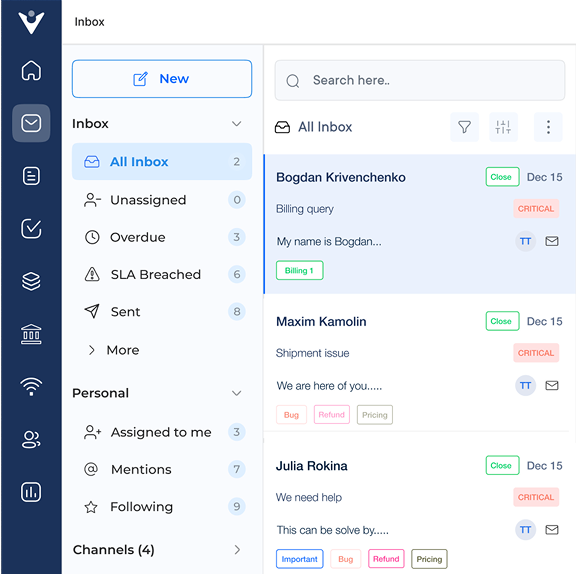
Market better, sell faster and support smarter with Veemo’s Conversation Customer Engagement suite of products.
Unify all your customer data in one platform to deliver contextual responses. Get a 360 degree view of the customer lifecycle without switching tools.
Connect with the tools you love to reduce manual activities and sync your business workflows for a seamless experience.
 https://veemo.io/wp-content/uploads/2024/12/customer-service-response-time.png
1256
2400
Webvision Solution
https://veemo.io/wp-content/uploads/2024/11/veemo.svg
Webvision Solution2025-10-17 10:51:142025-10-17 10:51:149 Effective Tips to Reduce Customer Service Response Time
https://veemo.io/wp-content/uploads/2024/12/customer-service-response-time.png
1256
2400
Webvision Solution
https://veemo.io/wp-content/uploads/2024/11/veemo.svg
Webvision Solution2025-10-17 10:51:142025-10-17 10:51:149 Effective Tips to Reduce Customer Service Response Time https://veemo.io/wp-content/uploads/2024/10/How-to-Create-Knowledge-Base.png
1257
2400
Vikas Sachan
https://veemo.io/wp-content/uploads/2024/11/veemo.svg
Vikas Sachan2024-10-21 12:24:342025-11-03 07:13:21How to Create a Knowledge Base in 9 Easy Steps: The Ultimate Guide
https://veemo.io/wp-content/uploads/2024/10/How-to-Create-Knowledge-Base.png
1257
2400
Vikas Sachan
https://veemo.io/wp-content/uploads/2024/11/veemo.svg
Vikas Sachan2024-10-21 12:24:342025-11-03 07:13:21How to Create a Knowledge Base in 9 Easy Steps: The Ultimate Guide https://veemo.io/wp-content/uploads/2024/02/Live-Chat-for-Sales.png
628
1200
teamwebvisionsolution@gmail.com
https://veemo.io/wp-content/uploads/2024/11/veemo.svg
teamwebvisionsolution@gmail.com2024-10-21 11:31:222025-08-06 10:22:06How to Use Live Chat for Sales? 7 Proven Ways to Grow Revenue
https://veemo.io/wp-content/uploads/2024/02/Live-Chat-for-Sales.png
628
1200
teamwebvisionsolution@gmail.com
https://veemo.io/wp-content/uploads/2024/11/veemo.svg
teamwebvisionsolution@gmail.com2024-10-21 11:31:222025-08-06 10:22:06How to Use Live Chat for Sales? 7 Proven Ways to Grow RevenueGrow Customer Relationships and stronger team collaboration with our range of products across the Conversational Engagement Suite.

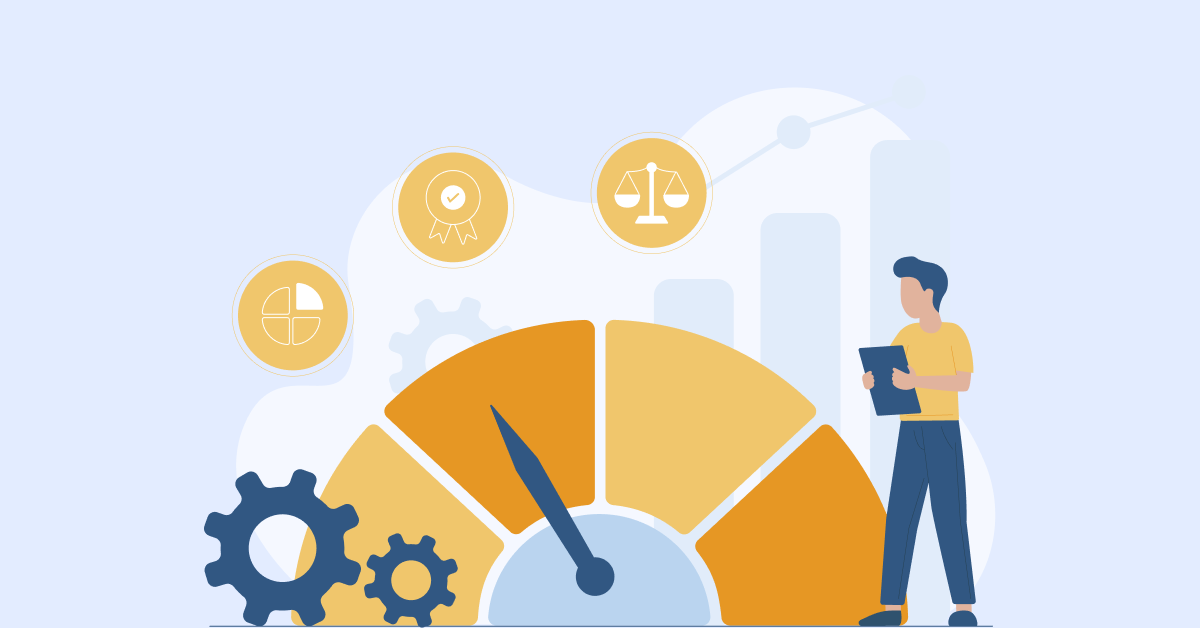 7 Key Customer Satisfaction Metrics to Track in 2025
Scroll to top
7 Key Customer Satisfaction Metrics to Track in 2025
Scroll to top